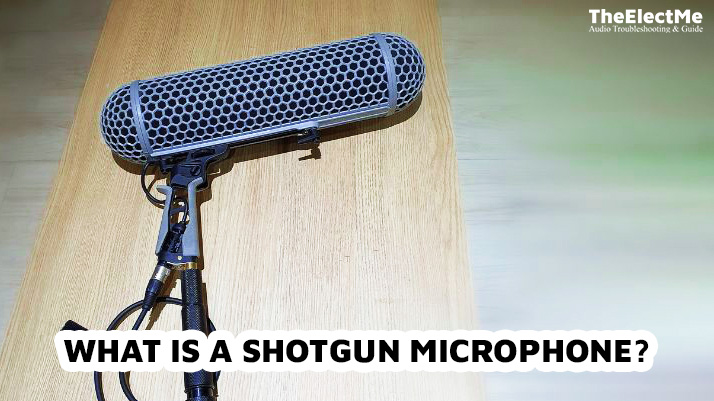In the world of sound, impedance is a big deal. So, what is it? Simply put, impedance measures how hard it is for an electric current to move through a circuit, like your headphones. It’s like resistance, but for alternating current (AC), the type of current audio signal used.
Why should you care about impedance in headphones? Well, it has a lot to do with the sound you hear. Impedance can affect volume and sound quality. If the impedance is too high or too low, your music might sound better than it should.
Let’s start with the basics.

What Is The Meaning Of Impedance In Headphones?
Electrical impedance is a roadblock for the electric current. It’s a fancy term to describe how much a circuit slows down the flow of electricity. Like highway traffic, electric currents need a clear path to move freely.
But sometimes, things can get in its way and slow it down. That’s what impedance does – it makes it harder for the current to get where it’s going.
In headphones, impedance plays a big part in how they work. Inside your headphones, there’s a tiny coil of wire called a voice coil.
When the electric current flows through this coil, it creates a magnetic field that moves a diaphragm. This movement produces the sound you hear.
Let’s move to the effect of impedance on headphone sound quality.
How Does Impedance Affect The Sound Quality Of Headphones?
Impedance doesn’t just affect how loud your headphones can go; it also significantly impacts sound quality. The relationship between impedance and good quality is quite interesting.

High impedance headphones
High-impedance headphones generally offer better sound quality than low-impedance ones. High-quality headphones can handle more power from an audio source without distorting the sound.
They are also less likely to be affected by the output impedance of the audio source. That means they can produce clear, detailed sound, even at high volumes. But, they need more power to deliver high volume levels.
They’re often used with high-quality audio equipment, like professional mixing consoles.
Low impedance headphones
On the other hand, low-impedance headphones are designed to work well with devices with lower power outputs, like smartphones or portable music players. They can get loud quickly, but the sound can become distorted if you crank the volume too much.
Discuss the factors that affect headphone impedance.
What Are The Factors That Affect Headphone Impedance?
Several factors affect the impedance of headphones. Let’s take a closer look at some of them.
The Role of Headphone Drivers
Headphone drivers are the heart of your headphones. They’re the part that converts electrical signals into sound. There are several types of drivers, each affecting impedance in different ways.
- Dynamic Drivers: These are the most common type of driver. They use a magnet to move a diaphragm, which produces sound. Active drivers can have varying impedance levels, but they generally fall on the lower end of the scale.
- Planar Magnetic Drivers: These drivers use a thin, lightweight diaphragm suspended between two magnetic fields. Because of this design, they can handle high power levels and often have higher impedance than dynamic drivers.
- Electrostatic Drivers: Electrostatic drivers use an electrically charged diaphragm placed between two stators. This design allows for exact sound reproduction but leads to high impedance levels.
The Materials Used in Headphone Construction
The materials used in making the headphones can also affect their impedance. For example, the type of wire used in the voice coil can change the impedance.
Copper wire has lower resistance than steel wire, so a copper voice coil would have a lower impedance than a steel one.

The Design and Size of the Headphone
Finally, the design and size of the headphone can influence its impedance. More giant headphones tend to have higher impedance because they have larger voice coils, which increase resistance.
Similarly, over-ear headphones often have higher impedance than in-ear models. They’re designed to produce better sound quality and need more power.
Let’s move to how to choose the right headphones for your needs.
Related: How To Reset Bose Headphones?
How Do You Choose The Right Headphones Based On Impedance?
Choosing the right headphones is more than picking the ones with the most appealing design or sound quality. The impedance of your headphones plays a crucial role in how well they will work with your audio equipment.
Here are some tips to help you choose the right headphones based on impedance:

1) Check the Impedance of Your Audio Source
Before you buy headphones, check the specifications of your audio source. Look for the headphone output impedance, which should be listed in the user manual or on the manufacturer’s website.
2) Choose Headphones with Appropriate Impedance
As a general rule, the impedance of your headphones should be eight times higher than the output impedance of your audio source. For example, if your audio source has an output impedance of 2 ohms, you should look for headphones with an impedance of 16 ohms or more.
3) Consider Your Listening Habits
If you primarily use portable devices like smartphones or MP3 players, low-impedance headphones (less than 50 ohms) would be a good choice as an error occurred during generation. Please try again or contact support if it continues.
So, when choosing headphones, make sure to consider impedance. It’s crucial in determining sound quality and compatibility with your audio equipment. Consider the type of drivers, materials used, and overall design of the headphones to find the right one for your needs.
Conclusion – Impedance In Headphones
To summarize, impedance in headphones plays a critical role in determining sound quality and compatibility with audio equipment. High-impedance headphones offer excellent quality but demand more power for high volume.
Low-impedance headphones are fabulous for portable devices but may distort at high volumes.
Factors such as headphone drivers, materials used, and design can all affect the overall impedance of headphones. It’s essential to consider these factors when choosing the right headphones for your needs.
Check the audio source’s impedance and choose headphones with matching impedance for optimal sound quality. With this knowledge, you can make an informed decision and find the perfect headphones for your listening pleasure.



